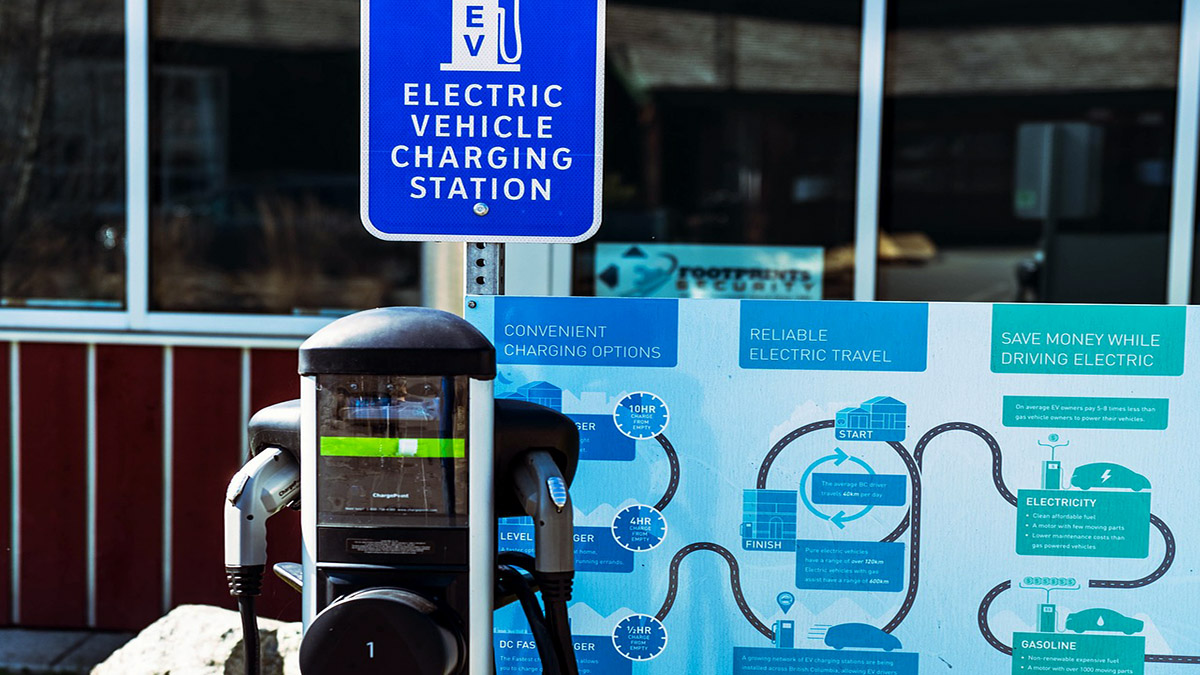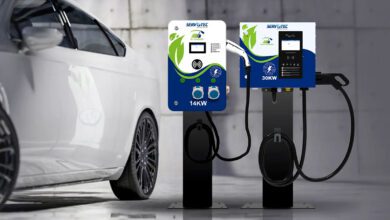Aiming to demonstrate the concept of using a clean source of energy (solar) for charging Electric Vehicles (EVs), a new report has shown that electric vehicle charging stations (EVCSs) with solar rooftop photovoltaic (SRTPV) facility are economically more viable than those with grid.
“The mismatch between solar energy generation and consumption (from charging) can be solved by deploying net-metering at charging stations. Among the scenarios considered, an EVCS connected to RTPV under net-metering policy represents the best-case scenario with the least LCOC,” the report by the Centre for Study of Science, Technology and Policy’s (CSTEP’s) said.
Report is based on the CSTEP’s system design for the pilot project at the Bangalore Electricity Supply Company (BESCOM) Corporate Office premises consisting of a power conversion unit (PCU), solar rooftop photovoltaic (SRTPV) panels, a lithium-ion battery bank, and an EV charger as the main components.
The project showcases an intelligent bi-directional converter (PCU) that interfaces with SRTPV and battery systems (with DC coupling) to manage the energy flow with EV chargers and the grid. “An intelligent computing unit in the PCU commands the energy flow across these components to maximise the generated solar energy for self-consumption,” the study said.
This is necessary in view of the facts that Indian cities top the charts every year for worst air quality in the world. Studies have established that the transport sector is a major contributor (40-80%) to air pollution in the cities. Hence, decarbonising the transport sector with the deployment of electric vehicles (EVs) is a crucial step in mitigating air pollution.
Government too has been pushing EVs and, of course, as part of its proposed action plan to combat climate change promised to have 450 GW of solar power among other renewables.
“Running an electric vehicle in the USA leads to a greater reduction in CO2 emissions than running it in India since the grid energy (used by the EV) in India is predominantly generated using coal. Therefore, the renewable energy mix of grid electricity becomes essential in enabling green mobility in the truest sense,” CSTEP said.
The report highlighted the need for prioritisation of solar energy for local consumption before feeding it to the grid and said: “The deployment of a novel charging algorithm where the EV charging load is made to follow the solar energy generation profile. Such a method reduces the need for a costly battery energy storage system (BESS).”
A battery storage capacity equal to 40 kWh was considered in the analysis, which stored approximately 16% of the total daily solar energy (on average) generated. The costs of upstream electricity for grid only, PV only, and PV plus BESS are ₹5, ₹4.6, and ₹8.9 per unit, respectively. “Including a BESS increased the cost of PV+storage system electricity by ₹5.3/kWh.”
Novel framework to estimate the levelised cost of charging (LCOC) at a certain EVCS with grid connected RTPV and RTPV plus energy storage is also provided in the report. The framework can be extended to assess the feasibility of using a grid tied RTPV plus energy storage system serving any electrical load in general.
“Currently, only EV charging guidelines are in place, sourcing the power from renewable energy sources is not emphasised. Learnings from the study can, therefore, guide policies for the widespread adoption of SRTPV-based EVCSs,” the report mentioned.













